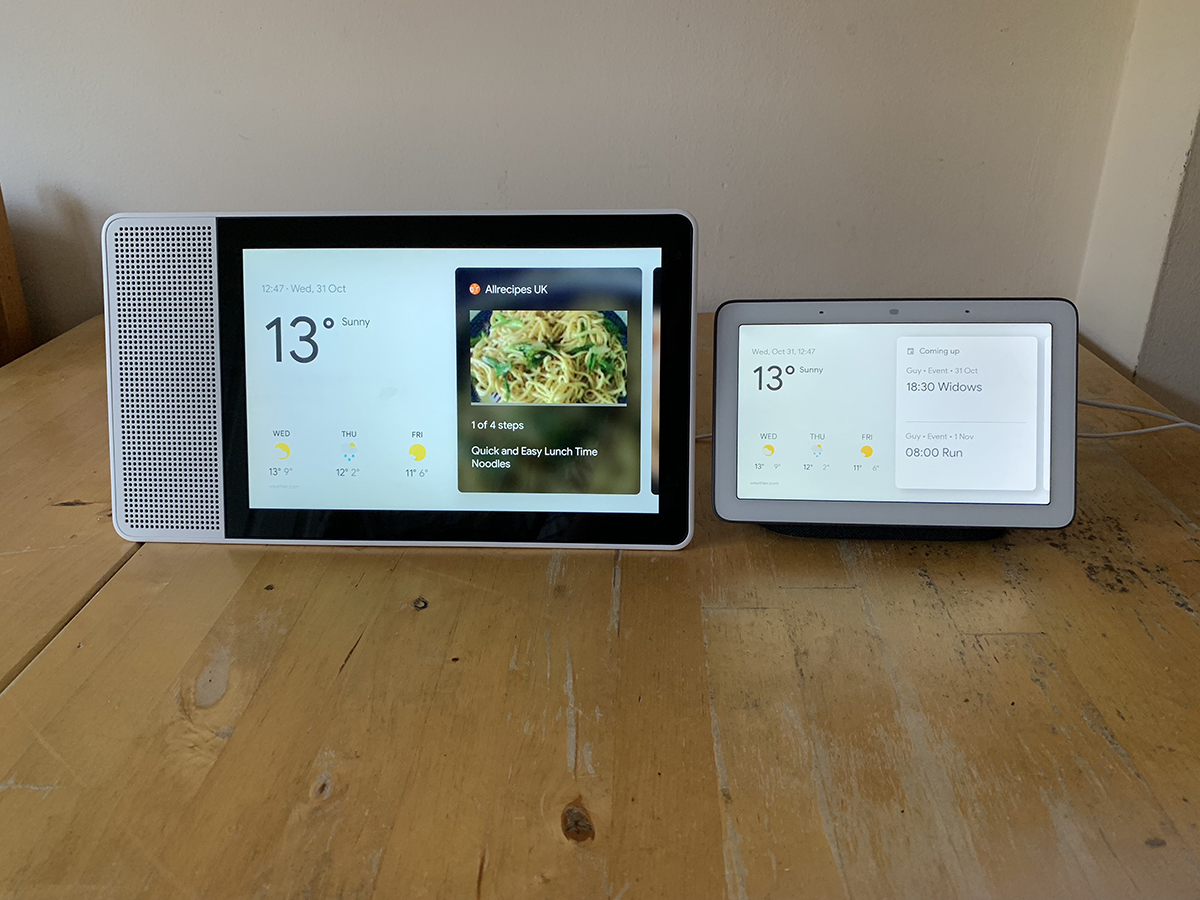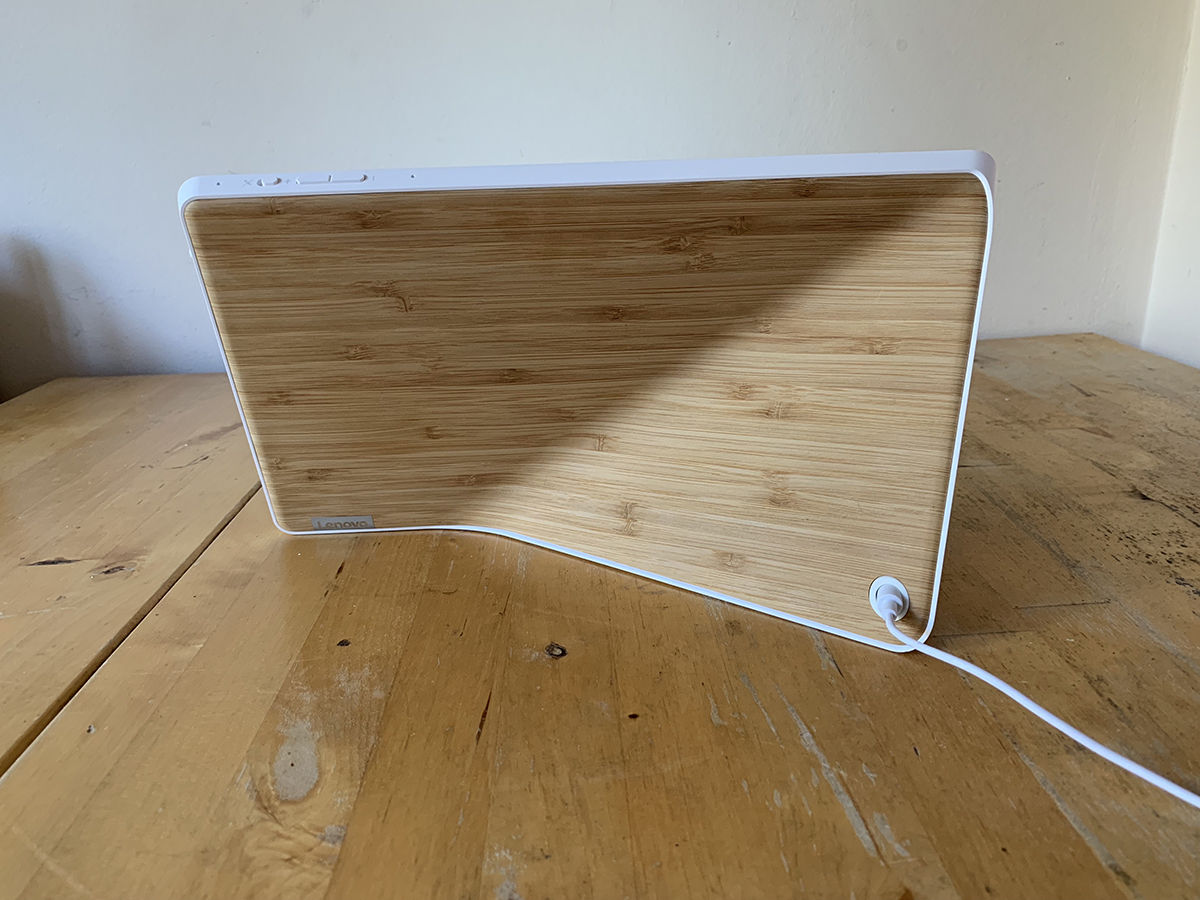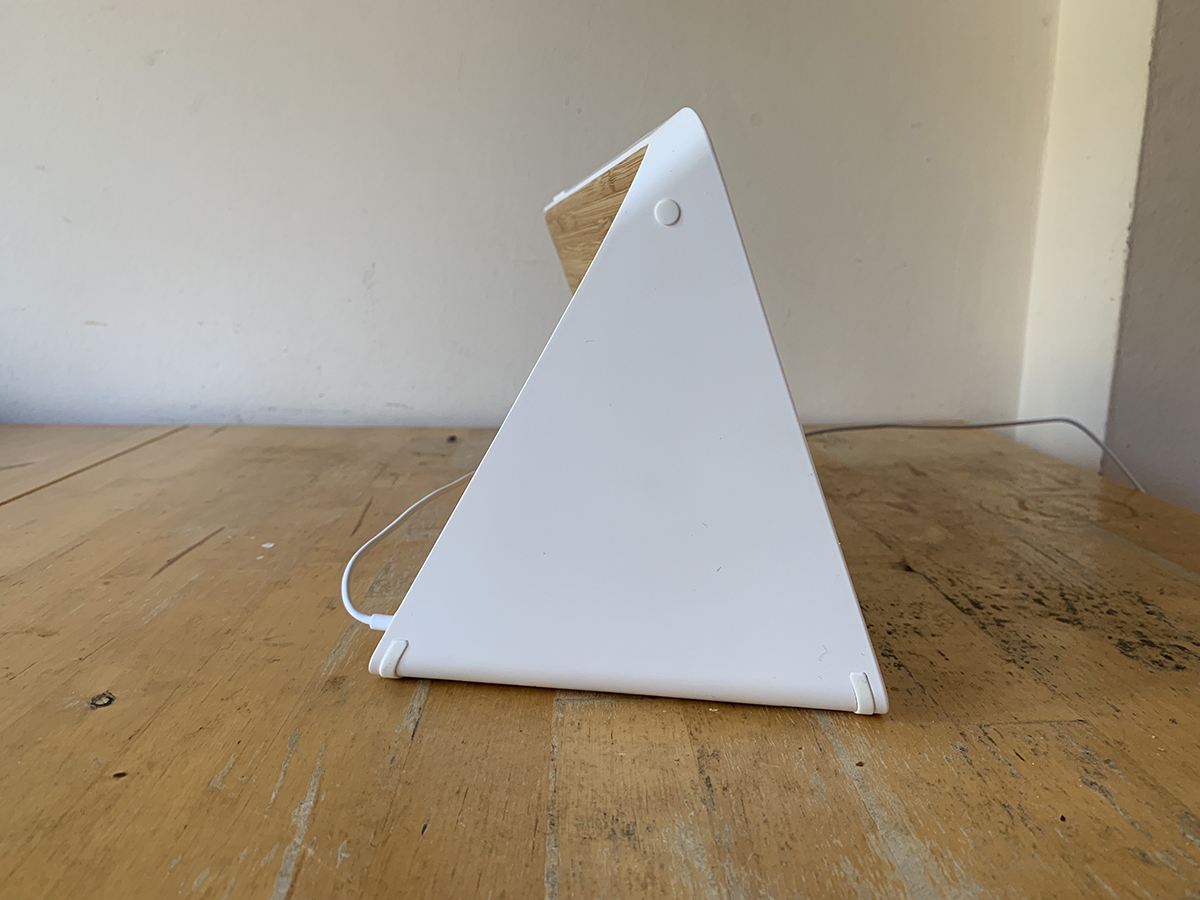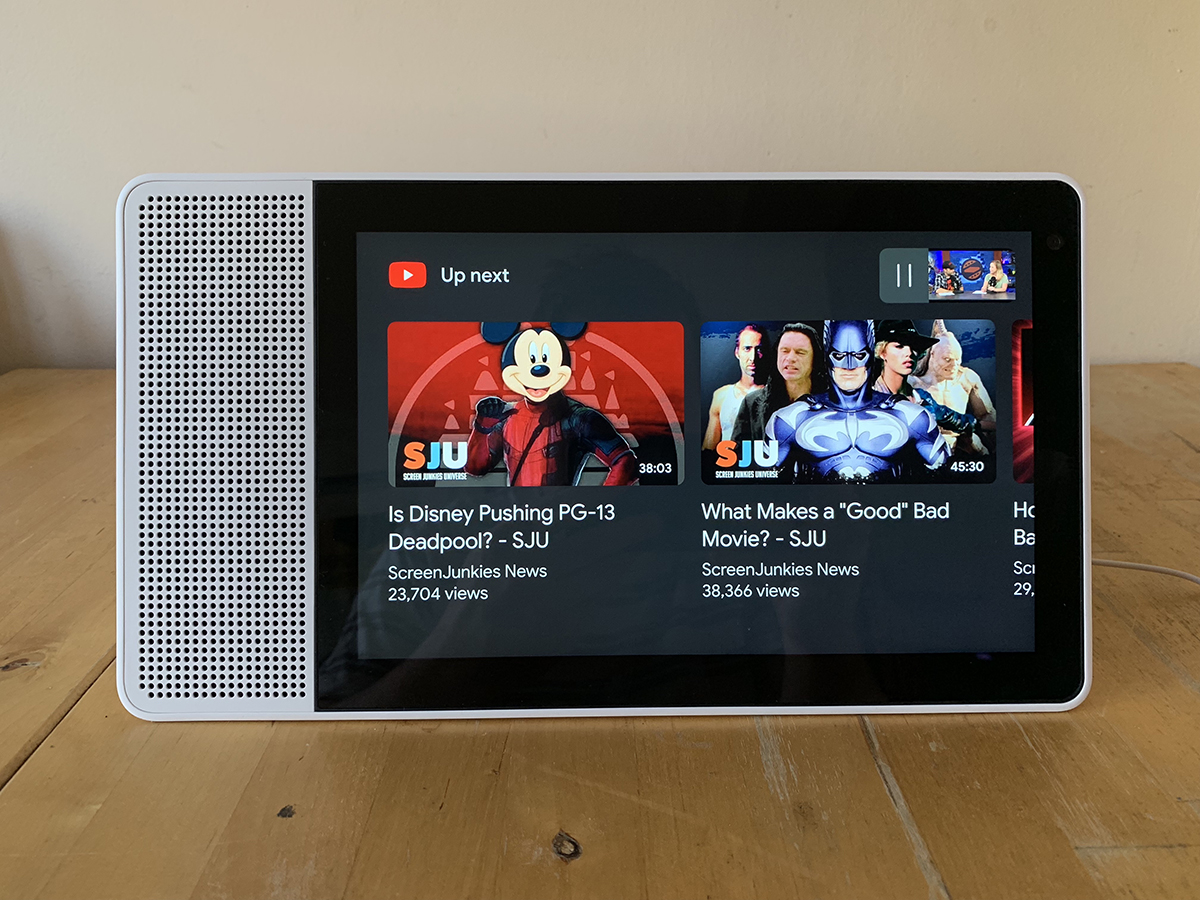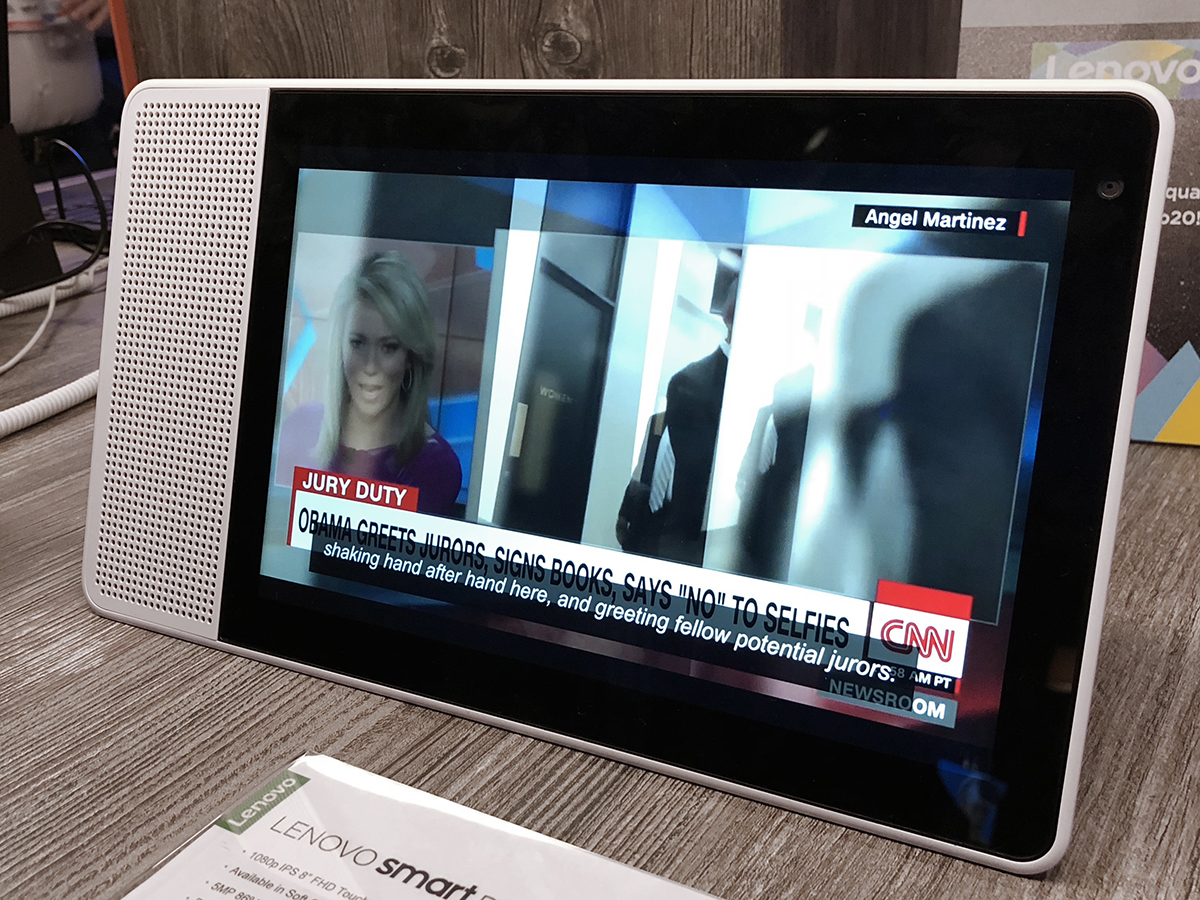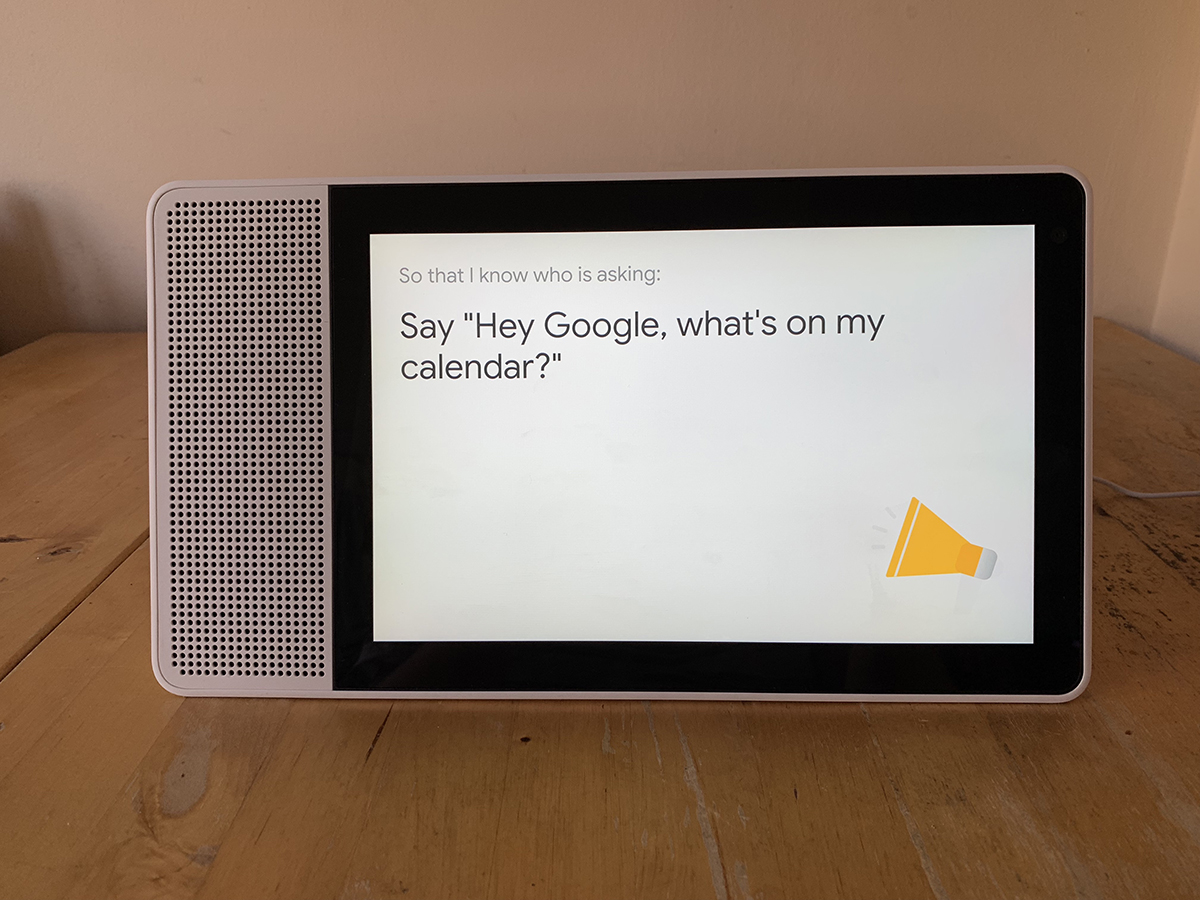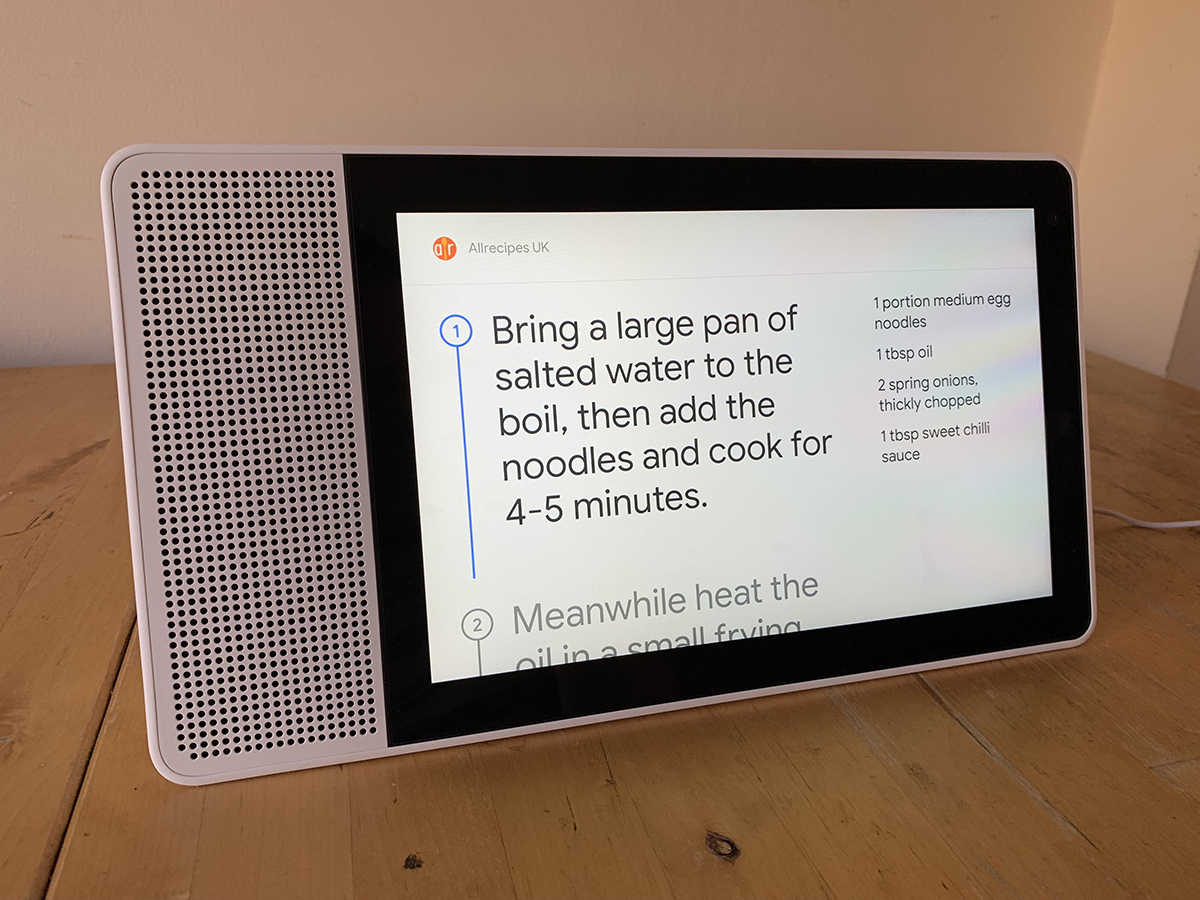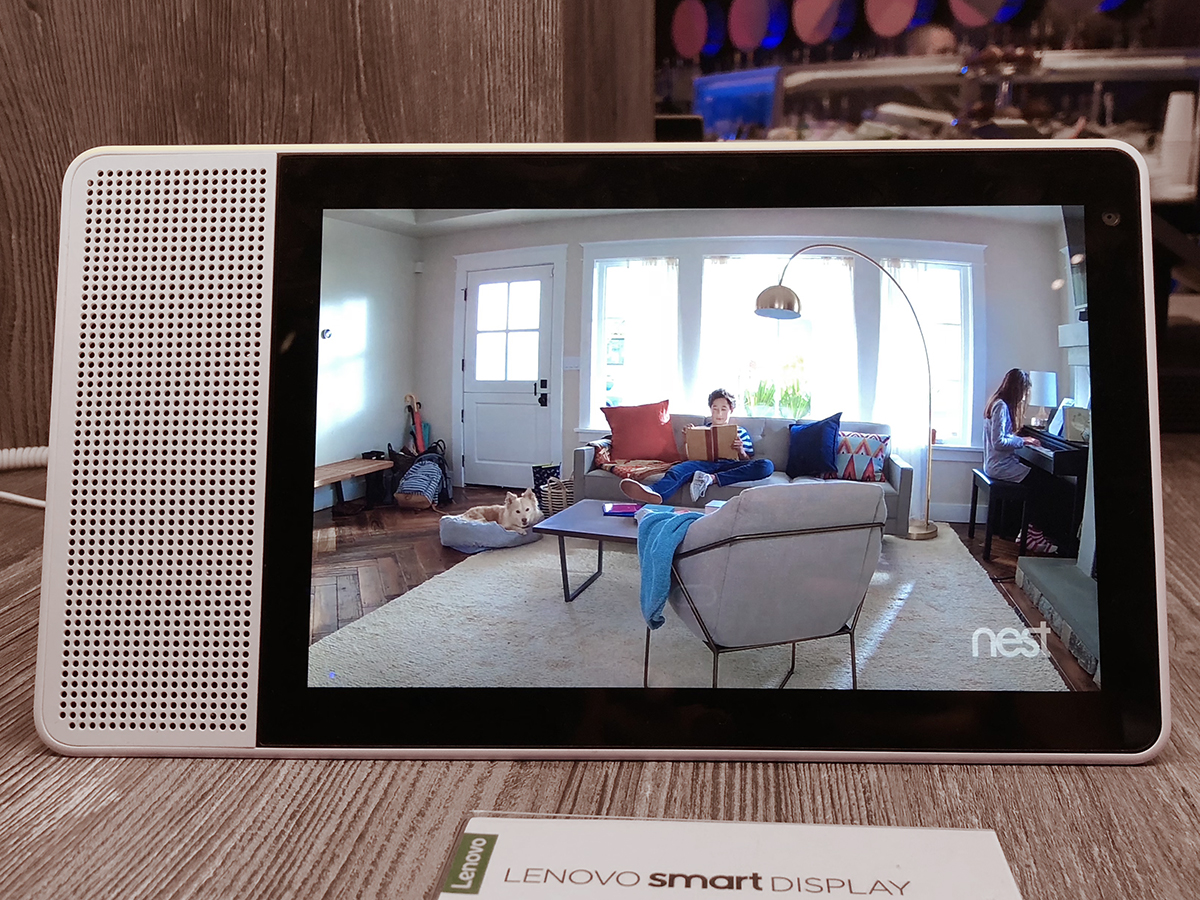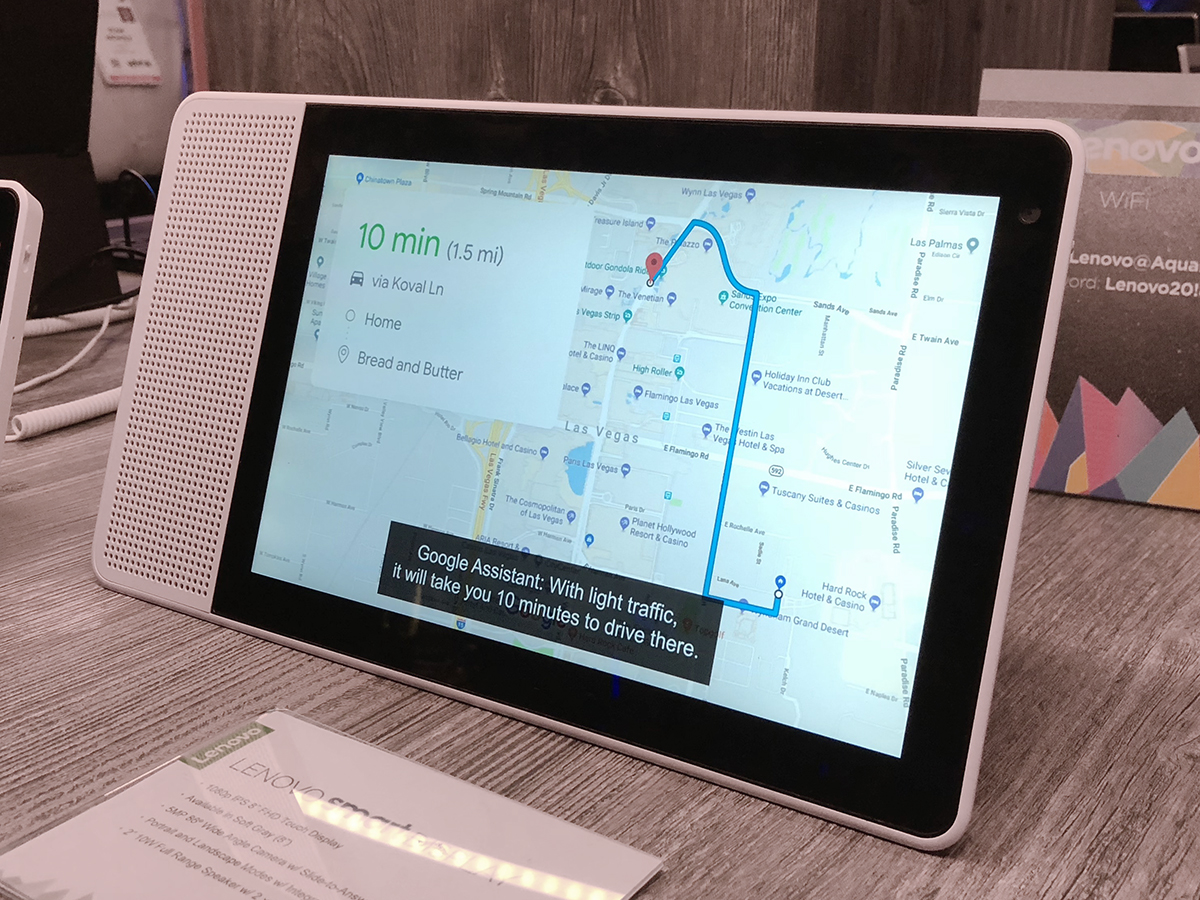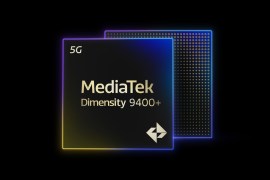Lenovo Smart Display review
Lenovo’s screen-based smart assistant is large, sounds great and makes video calls
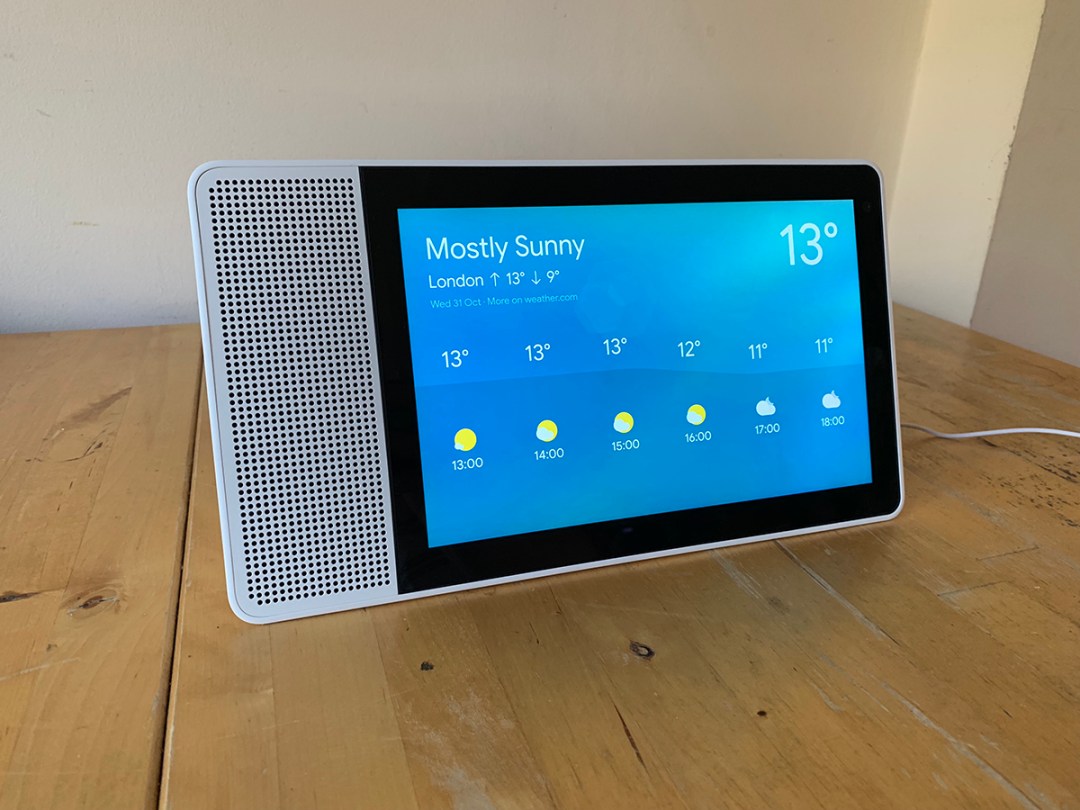
The Echo Show still seems like a bit of a sideshow for Amazon next to its more popular display-less smart speakers, but that’s mainly down to the Show’s ridiculous £220 price tag.
Google, meanwhile, is aggressively undercutting the competition, releasing its Home Hub recently for a much more palatable £140. We loved it – it was a great virtual assistant, a brilliant digital photo frame, and perhaps most compellingly of all, a real bargain.
Lenovo’s Smart Display is coming hot on the heels of the Home Hub, also running a visual version of Google Assistant.
It’s available in two sizes: 8in and 10in, costing £160 and £230 respectively (our review model was the larger 10in version). Unlike the Google Home Hub, they both come equipped with a camera, which means you can make video calls with it. And as a result of this, Lenovo’s allowed the Smart Display to be oriented in portrait mode for when you’re video chatting with someone on their phone.
The display isn’t quite as bright as the one on the Google Home Hub, and some people may have privacy concerns about a device with a camera on it, but it’s a similarly fantastic smart home gadget. We reviewed the 10-inch model, but can more easily recommend the 8-inch version, for just £20 more than the Google Home Hub, you get another inch of screen, improved audio and the ability to video call.
LENOVO SMART DISPLAY DESIGN: MY LEFT FOOT
To state that the Lenovo Smart Display has a unique design is something of an understatement. It looks downright goofy, with a swooping left “foot” that allows the device to stand both vertically and horizontally (the latter being its default position).
But there are other novel design choices, such as the large speaker grille sitting on the left of the display (rather than either side), the fact that it only comes in white, and that the back has either a grey or wood finish. Basically, it looks nothing like other smart displays on the market, and whether that’s a good or bad thing will ultimately come down to personal preference.
The highlight of the device, though, is that huge display. The bezels are a little bigger than we’d like, but the focus on the screen means that this is something you’ll actually want to use for YouTube and Google Photos. In fact, the larger sizes are undoubtedly the best reason to choose a Lenovo Smart Display over the Google Home Hub, given the latter’s rather diminutive size.
Aside from that novel stand, the rest of the Lenovo Smart Display is as you’d expect from a device like this. It uses a power supply rather than batteries, so there’s a power input on the left leg, but there’s no ethernet port or aux audio input. There is a USB-C socket under a fiddly removable cover, but that’s used for servicing only. You can’t use it to charge your phone.
There are also buttons to adjust volume, but you can of course also ask Google to do that using your voice. The real differentiating feature of the Lenovo is its front-facing camera, which allows you to hold video calls with Android users or those who have the Duo app installed on their device.
If you want some alone time, you can disable the camera using the shutter close switch, which literally blocks the lens using a small piece of plastic. You can also disable the mic if you want total privacy.
LENOVO SMART DISPLAY FEATURES: THE DO-EVERYTHING SCREEN
As long as you’re already using Google’s apps and services (namely Calendar, YouTube and Photos), you’re going to get a lot out of the Smart Display.
By default, it’ll show reminders and calendar appointments as you’ve scheduled them in your calendar, suggest YouTube videos it thinks you’ll be interested in, and pulls down pics from Google Photos. It’ll do all of this with relatively little configuration in the Google Home app on your phone – you just have to tell it who you want photos of, and Google’s scarily-good facial recognition algorithm will do the rest.
While it’s initially a wake-up call on just how much Google probably knows about you, it makes the Lenovo Smart Display a really great device to have in the home. It quickly becomes part of your morning routine to ask the Smart Display about your day and have a personalised report prepared for you.
If you tell it how you usually get to work (I cycle), it’ll also warn you of traffic conditions so you can make a decision about what time you need to leave. Clever.
The Lenovo Smart Screen differentiates itself from its main competitor, the Google Home Hub, by housing a 5MP 720p front-facing camera. That means it can host video calls as well as audio calls; the Google Home Hub can only do the latter.
Frankly, we’re not convinced that many people use these devices for video calling given that the most natural places for them are on a shelf, meaning you usually have to stand up to take a call. But it’s good to have the option, especially for quick calls – we were able to say “OK Google, call mum” and be on video chat with her moments later.
It’s handy when you have your hands full in the kitchen. Video quality isn’t amazing for the person on the other end of the line, given the 720p camera, but it is functional, and again that big screen is great at showing off the face of the person you’re talking to.
The Smart Display is designed so you can turn it 90 degrees and hold a video conversation in portrait mode – handy for when you’re talking to someone on a smartphone.
But that’s the only thing you can do on the device in portrait mode – the interface and every other app work in landscape mode only. Lenovo has put all this effort into designing a device that works in landscape and portrait and it’s just for this one app, which we don’t think people will use that much anyway. Who knows, Google may release a portrait mode version of the Assistant interface in future, but for now, it feels like a lot of effort to design a product for such a specific niche.
Lenovo released the Smart Display ahead of the Google Home Hub, but thankfully they recently updated the software to support all the best features of Google Assistant on a display. This means it now has Assistant’s killer feature of Google Photos. Simply choose the people or albums you want to see, and the photos will be served to your display from the cloud. It’s fantastic, and makes the Smart Display the digital photo frame we’ve been waiting years for.
You can also add a small number of apps to the display, like Spotify or Deezer on the music side, and Netflix and All 4 on the video side.
It’s pretty limited at this stage, but you can cast from Google devices relatively easily, and if your house has multiple Google Assistant devices, you can take advantage of multi-room support. There are some glitches though. Netflix was supposedly supported but we couldn’t get it to cast.
And of course, if you’re an Apple user, things are going to be much less seamless than if you’re an Android user.
That said, voice control works brilliantly across supported services, so you to say “Play me some jazz music”, or “Play BBC Radio 6 Music” and Google will do as you command, figuring out the right service to play from without any human intervention required. We expect more services will be added in time as well — this is still early days in the age of the display-enabled Google Assistant device.
LENOVO SMART DISPLAY SMART HOME: ROOM TO GROW
Where once it was quite a way behind Amazon, Google’s come a long way in terms of smart home device support.
Obviously, the more Google-powered or owned devices you have in the house, the better, so if you have a Android-powered TV and a Nest camera, it’s going to be happy days.
But in our house of Philips Hue, Hive, Sonos and Netatmo devices, Amazon only had the edge on controlling the Sonos speakers, although Sonos has said it will be supporting Google in future.
Google’s visual interface really is a beautiful way to interact with your smart home though. The visual display means you have a reference point for choosing the brightness and colour of your lights, which is more preferable to just voice alone.
The cooking features are also particularly great if you choose to house the device in a kitchen, because you can see the ingredients and follow along with recipes much easier.
One thing we preferred on the Google Home Hub was that you could swipe down from the top of the screen to access your smart devices from the home screen. This isn’t enabled on the Lenovo Smart Display, so you have to use your voice to access similar features. This will no doubt be rectified in future software updates on the Lenovo, but right now it feels a bit more fiddly controlling lights and heating on Smart Display.
LENOVO SMART DISPLAY VERDICT
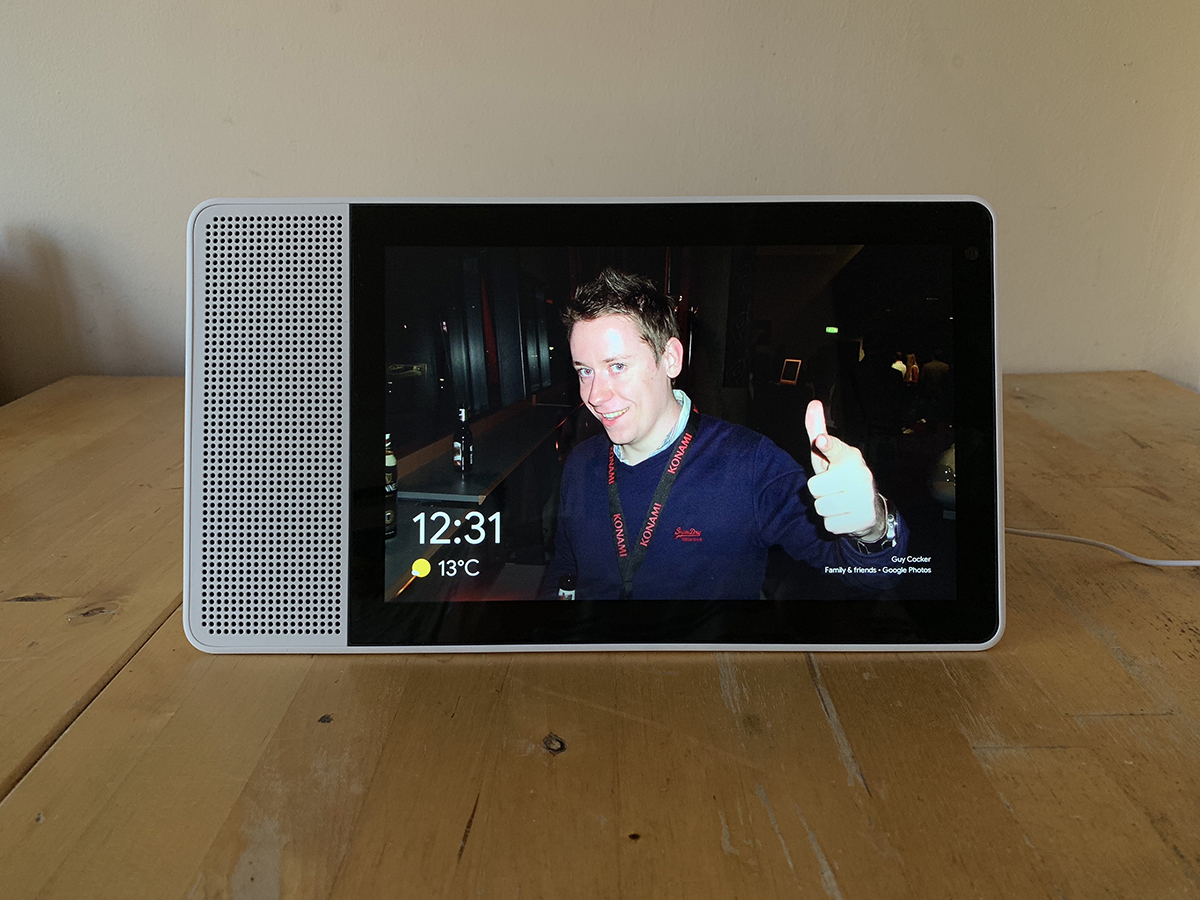
The Lenovo Smart Display is an interesting proposition.
On the one hand, it’s a great product at a great price (the 8in version at £159, anyway), and another example of how Google Assistant-powered visual smart assistants are much easier to recommend than Amazon’s Echo Show right now.
On the other hand, its strange styling serves an extremely limited purpose, one that probably won’t be used by that many people. There are still plenty of reasons to buy this over the Google Home Hub, though. The bigger screen, improved sound and ability to video call do warrant the extra £20, and it’s still a lot cheaper than the new Amazon Echo Show.
Ultimately, it’s a really great device at a really great price, and it comes highly recommended.
